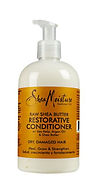
503-877-4158
Hair Care and Shampoos
With hair loss shampoo is critical to be reviewed and the wrong one can cause damage to hair by irritating the scalp and damaging the hair follicle. Some safe options are available see pictures if you wish to order contact me. It is important to find options that reduces the stress to the scalp. Toxic chemicals are commonly used in all skin care products and can be absorbed into our system and lead to more serious illnesses then hair loss.
Here are the most common offenders.
Sodium Lauryl Sulfate/Sodium Laureth Sulfate (SLS)
A surfactant found in many cleaning products. Also an insecticide. The sodium and ammonium laureate sulfates are known cancer-causing ingredients. Also causes liver damage, skin rashes, depression, diarrhea and eye damage.
Fragrance
Fragrance of any kind isn’t good. It clogs the lymphatic system and induces major organ system toxicity. Also causes endocrine disruption.
Cocamidopropyl Betaine
This foaming agent has been associated with skin and eye irritation and allergic contact dermatitis. Although the government regards it as safe, many people have negative reactions to it.
Triclosan
With a moderate hazard rating, triclosan should be avoided at all costs. It can accumulate in our fat cells and keep our body in a state of toxicity. It causes irritation of the skin, eyes and lungs, and causes endocrine disruption and organ system toxicity.
Polysorbates
Used to dissolve fragrance or other oil additives. Often found in conditioners. It leaves a residue on the skin and scalp, disrupts the skin’s natural pH and destroys the natural protective barrier of our skin and scalp. Polysorbate-80 is the worst of the bunch – but stay clear of all!
Polyethylene Glycol (PEG)
Often found in conditioners, PEG contains dangerous dioxin levels, often found as a by-product of the ethoxylation process in manufacturing. Dioxins have a direct link to cancer, and also cause organ system toxicity.
Potassium Sorbate
Potassium sorbate is used as a preservative in hair-care products. It causes skin and organ system toxicity.
Phenoxyethanol
Another preservative used in cosmetics and hair care products. Causes organ system toxicity, and is an irritant to the skin, eyes and lungs. The FDA even warned that phenoxyethanol can cause shut down of the central nervous system, vomiting and contact dermatitis.
Retinyl Palmitate
Retinyl palmitate, a form of vitamin A, can speed the development of skin tumours and lesions, making it a possible carcinogen. Causes reproductive toxicity and organ system toxicity.
Dimethicone
Dimethicone is a silicone oil that can make the scalp and skin incredibly dry and irritated. It forms an almost plastic-like barrier on the outside of the skin and traps bacteria, sebum and impurities with it. It is also an eye irritant and is non-biodegradable and horrible for the environment.
Behentrimonium Chloride
Behentrimonium Chloride is a type of ammonium salt used as a preservative and surfactant. It is a toxic compound, with concentrations of 0.1% and higher having been shown to damage the eyes. It is irritating to the skin and causes inflammation.
Quaternium-15
This lovely chemical is another quaternary ammonium salt used as a surfactant and preservative in personal care products. It acts as a formaldehyde releaser and is definitely not safe. Formaldehyde is extremely carcinogenic, and should be avoided at all costs.
Additionally, It does matter how you style and brush your hair. Brushing your hair a hundred strokes a day won't give you healthier hair. In fact, over-brushing encourages hair damage and hair loss, says the American Academy of Dermatology. The type of brush you use and how you use it can influence the overall health of your hair.
Use an inexpensive, plastic hair brush with widely-spaced needles, advises dermatologist Paradi Mirmirani, M.D. Expensive natural boar bristle brushes are often promoted as the "best" type of brush to use for your hair. In fact, these can be extremely damaging to your hair. Dr. Mirmirani explains that boar bristle brushes create a lot of friction as they slide through your hair, rubbing against its natural grain.
Don't brush your hair when it's sopping wet if you havstraight hair, advises the AAD. Your hair is very flexible when damp, and brushing it can make it break. Only brush straight hair when it's dry. However, if you have curly or kinky hair, you should only comb or brush it when it's wet to avoid breakage, says the AAD.
Wait until your hair is almost dry before using a brush to style it if you blow dry your hair. Not only is this less damaging to your hair, says skincare expert Paula Begoun, it's simply easier to style slightly damp hair than it is wet hair. To achieve maximum smoothness, you may need to blow dry and brush your hair at various levels of "almost dry" to find out what works best.
Brush your hair less, not more. The AAD points out that contrary to what you may believe, brushing your hair with vigorous, powerful strokes damages it. Keep brushing and styling to a minimum. Also, never use your hair brush to "rat" or backcomb your hair, Begoun advises. Not only does this type of hair style date you, it's extremely bad for your hair.


